Best 15 Trout Baits Used By Top River Guides
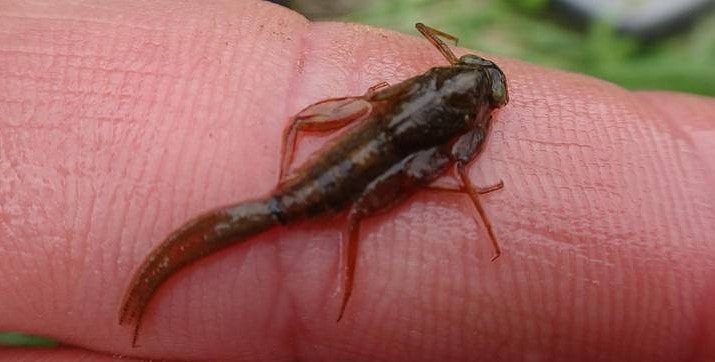
As a trout fishing guide for 22 years and a trout angler for 37 years, I think I have literally tested every trout bait known to man in every condition imaginable for both stocked and wild trout.
While other websites recommend a lot of really bad baits that I wouldn’t use if you paid me (because I know better), I’ll only recommend proven baits that experts use.
My experience has proven that the best trout baits will trigger a feeding response in most trout, even in very tough conditions. What sets great baits aside is that trout will also hold onto them. The most effective baits include worms, fish eggs, insects, and organic baits.
The Two Types Of Trout Baits
There are two types of baits being recommended for trout. High percentage baits, and low percentage baits.
High Percentage Baits: High percentage baits are what good trout guides and good trout anglers use. High percentage baits are baits that most trout will eat most of the time. They are consistent producers, and trout hold onto them.
High-percentage trout baits will work on wild and stocked trout even in tough conditions.
Low Percentage Baits: Low percentage baits attract a smaller percentage of trout and they do so less often. They are inconsistent and trout will also spit these baits out faster and more often.
Even with my skills and knowledge of catching trout, I would catch less trout if I used many of the baits recommended by other anglers and other websites.
We may make a small commission from some of the links on this website, which is at no cost to you. I appreciate your support.
Best Baits For Trout: What Guide Use
These are baits that trout guides actually use. They consistently work and have been tested and proven to work in real fishing situations for both wild and stocked trout. There is no reason to use anything else.
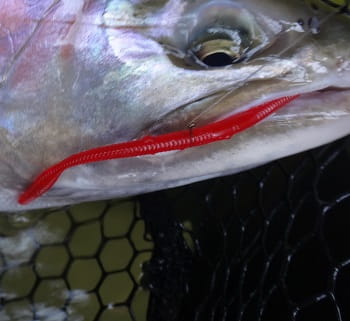
- Spawn, salmon eggs, skein, beads: The conditions will dictate which is best as some of these are not always effective.
- Worms: Live worms and even plastic worms are great foir trout, but the conditions will dictate which is best.
- Flies, insects: Artificial flies and live nymphs, as well as crickets, grasshoppers, helgramites, are all fantastic for catching trout.
- Live Baits: Minnows, leeches, crayfish, grubs, maggots, and mealworms are all good options.
Even a great bait won’t work well if you use the wrong hook, have a bad leader setup, and don’t present the bait properly. This website tells you all my guide tips and tricks to catch trout better.
1. The Best Trout Bait Is The Worm
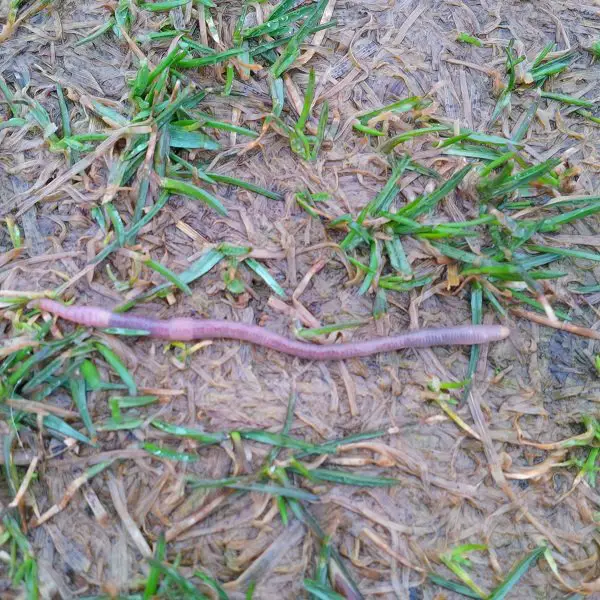
The worm is likely the best and most well-known bait there is, but there are times when worms do not work as well as other baits.
The garden worm or red wiggler worm is a smaller worm ranging from 2 to 5 inches in length, and this is the type and size of worm that I prefer to use.
2. Fish Eggs Are Hard To Beat
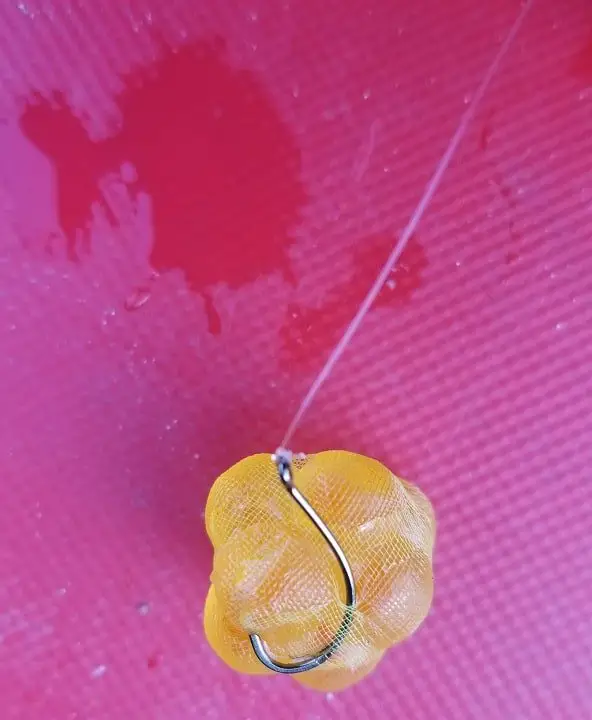
Fish eggs catch a lot of trout since eggs are a great source of protein for trout and are readily available at certain times of the year.
Fish eggs are also known as spawn, spawn bags, roe, roe bags, trout eggs, or salmon eggs.
For my guide tips on using eggs as bait, go to my page Spawn Bags: Guide Secrets For More Fish. On this page, I discuss colors, and sizes and provide tips on the best types of eggs and even how to preserve them.
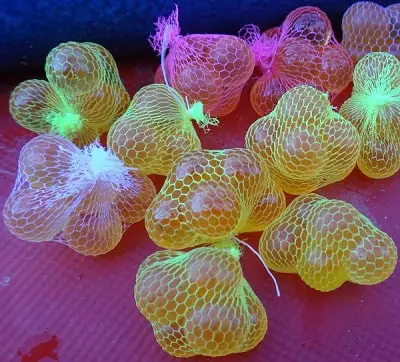
Salmon Spawn Sacks
These are Pre-tied spawn sacks using Coho eggs. These Spawn Sacks by Superior Outfitters get great reviews from users.
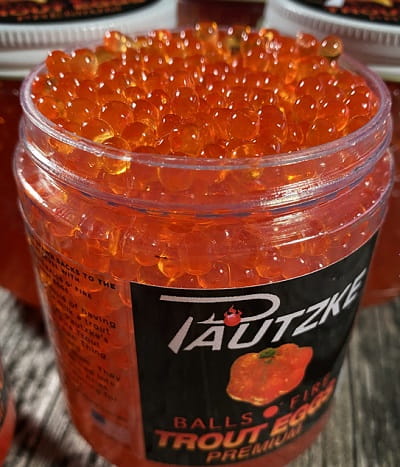
Loose Trout Eggs
The Pautzke Balls O’ Fire Trout Eggs are some of the best loose eggs for tying your own spawn bags.
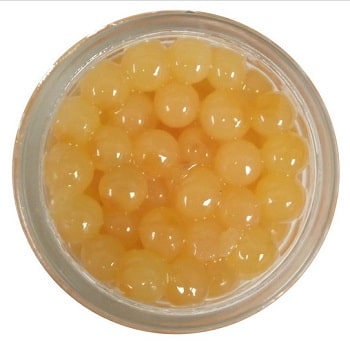
Single Salmon Eggs
The Pautzke Balls O’ Fire Salmon Eggs are great when you need to use a single egg on a hook. I have even tied them into spawn bags
3. Aquatic Insects And Artificial Flies
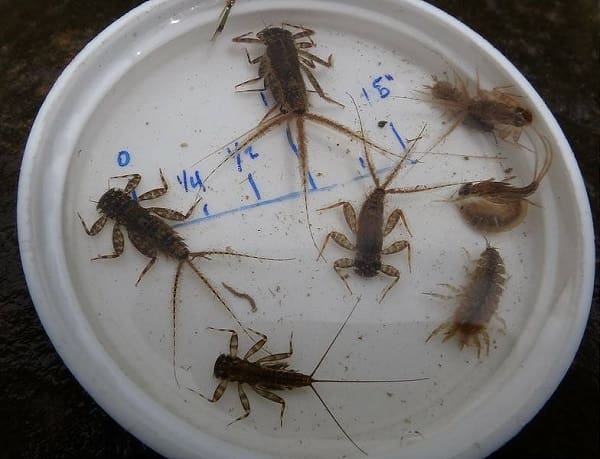
Live insects and artificial flies are often my best-producing bait, and they account for more large trout than any other bait.
I also use them more than any other bait because they work year-round. But, if I and many other good guides use them all the time, you know they are good.
You can catch these aquatic insects yourself, but some tackle stores will sell aquatic insects like hellgramites or stoneflies as bait for trout and panfish.
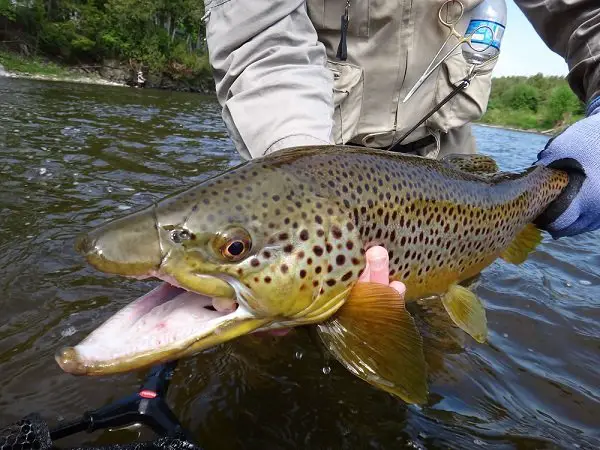
A size 12 or 14 hook should do the trick with real insects, and a size 12 to size 18 works well for artificial nymphs and dry flies.
The great thing with flies is you can imitate insects the trout are feeding on below the surface and on the surface. They work on lakes and rivers.(1)
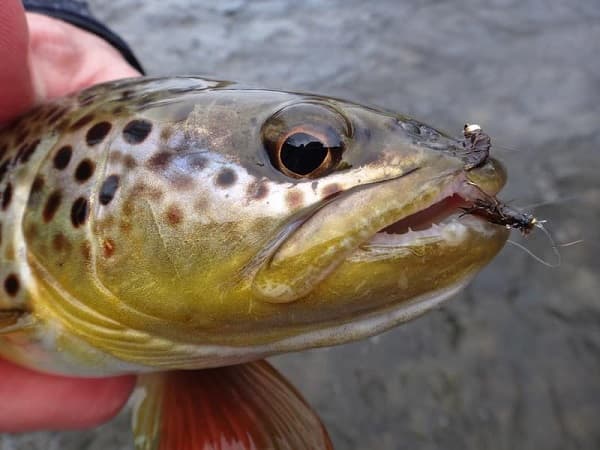
I use flies with spinning rods under a float or with the bottom bouncing method, or I use them when fly fishing. Trout eat flies, so get some.
Check out my page How To Fish Flies With Spinning Gear: 2 Best Methods
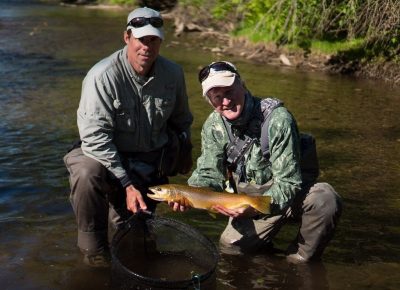
Flies can be so versatile and do not need to look like bugs. I have artificial flies that imitate leeches, minnows, crayfish, and even mice.
Check out my page on the Best Trout Flies.
4. Minnows And Baitfish
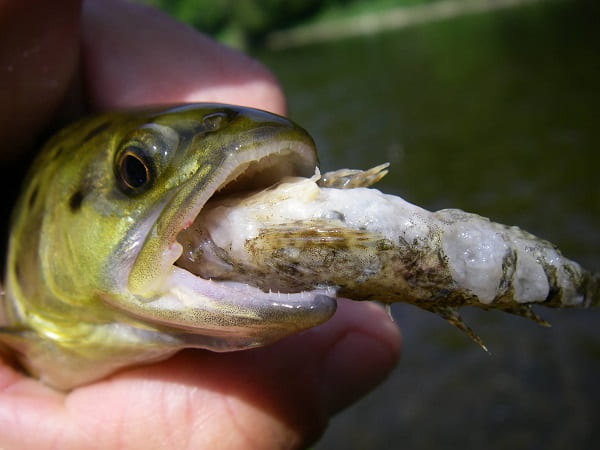
Fish eat fish, and trout are no exception. This means minnows and other live fish like sculpins can be great for trout in rivers or lakes.
You can get minnows from your local tackle store, or you can buy the same minnow trap I use and catch your own.
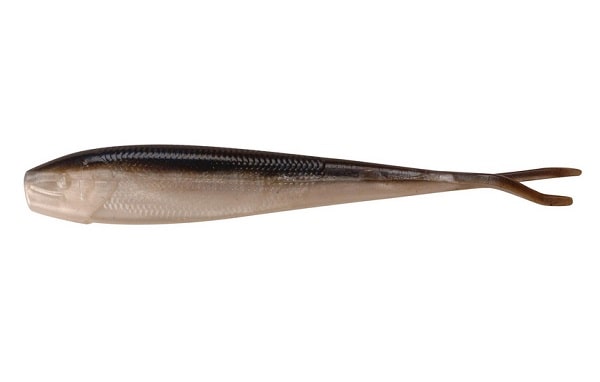
Minnow imitation baits and real minnows can be drifted under a float or using a bottom bouncing method.
The best imitation minnows that I have used are the Berkley Gulp! Alive! Minnows. You can also jig these imitation minnows with great success.
I like these minnows in colors like emerald shiner, smelt, and watermelon pearl.
5. Plastic Worms For Trout
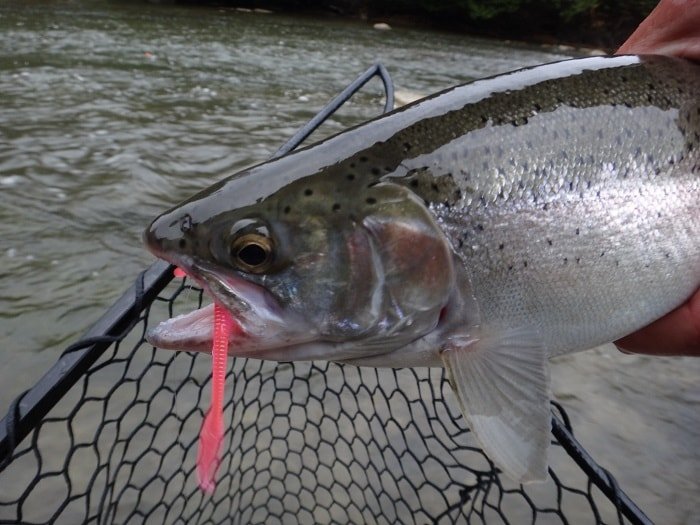
Plastic worms are my preferred choice when worm fishing for trout because I have determined that the plastic worms work equally well in moving water, plus they stay on the hook better when cast out.
Plus, they are also easy to get, easy to store in a vest, and they can be used multiple times.
Also, since plastic worms come in multiple colors, I think they often work better at getting the trouts attention, especially in dirtier water.
Do not use them in lakes and ponds. Many good trout guides use these as bait.
Check out my page Fishing With Worms: Guide Tips For More Trout And Steelhead.
6. Beads Are A Very Effective Trout Bait
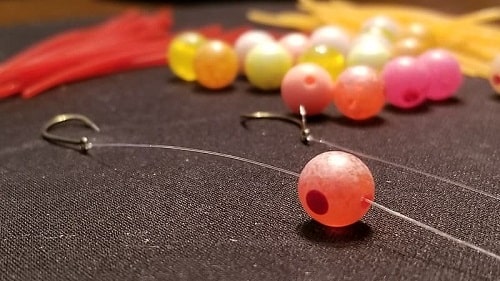
Beads are an egg imitation type bait that has gained a huge following in some areas because of how well they imitate natural eggs and because they catch a lot of trout.
Many good trout guides use beads.
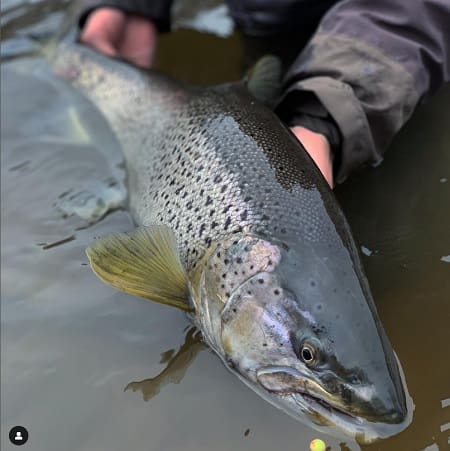
Beads are only good in faster water, they are not good for still water and are best used in currents.
Be sure you know how to rig them and know when to use glass beads, hard plastic beads, and soft beads. Check out my page Bead Fishing For Trout.
7. Grub-Type Baits For Trout
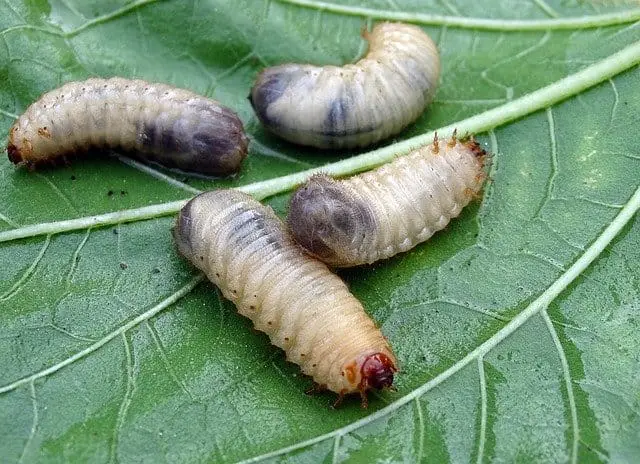
Wax worms, Maggots, Grubs, and Meal Worms are good options. These are small grub-like insects that can be placed on a hook and presented to trout.
I have also done well with live maggots and mealworms. With these types of baits, I use a size 10 or 12 egg hook to secure these guys to the line.
Since finding these types of bait is difficult sometimes, instead of live bait, I will use imitation grubs in rivers but not in lakes.
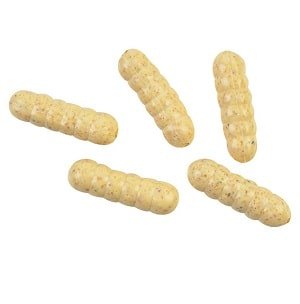
Power Wigglers
Berkley PowerBait Power Wigglers are a great grub/maggot imitation.
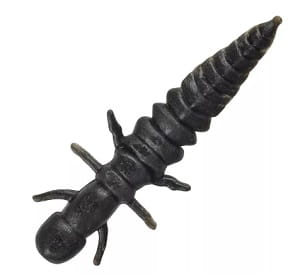
Lil Hellgrammites
Plastic Nymphs like this 2″ Lil Hellgrammites can be good in rivers.
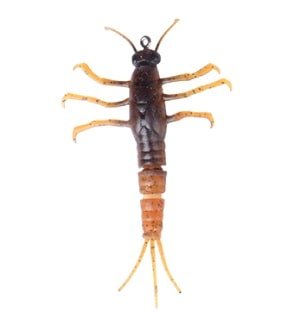
Savage Nymph
This 2-inch Savage Gear plastic nymph is good in rivers.
8. Crayfish Are Great For Trout
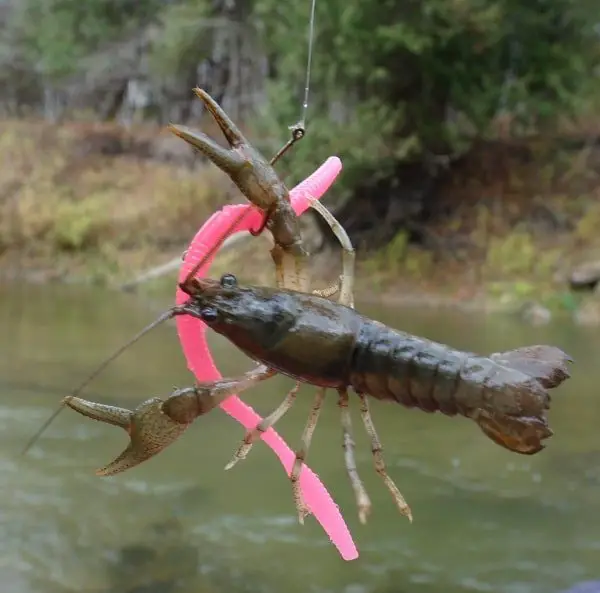
Also Known as CrawFish or Crawdads, trout in lakes and rivers eat crayfish.
If you can get your hands on one to two-inch-long live crayfish, they can work well all year long.
A single hook through the tail on a good quality size 6 or 8 hook should do the job. The bigger the crayfish, the bigger the hook.
If you can’t get real Crayfish where you live, you can order imitation Crayfish from FishUSA.com – HERE or From Bass Pro Shops – HERE. I only use imitation crawfish in currents.
9. Leeches
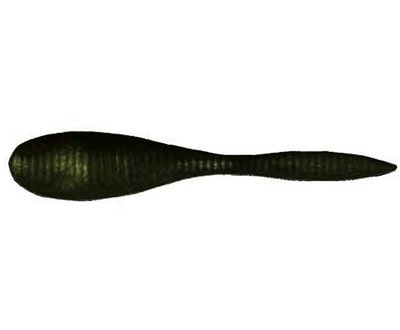
You may not like to touch these wiggly bloodsuckers, but trout love them, and I catch a lot of big trout on leeches in rivers and lakes.
Many tackle stores will sell live leeches as bait, but there are some great artificial leech baits, like the Berkley Gulp Leeches that work for me.
If they are live leeches, let them wiggle, I use a small size # 10 egg hook, and I only hook them once in the mouth so that they stay alive longer and so they wiggle like crazy, which attracts more trout.
10. Crickets,Grass Hoppers, and Beetles
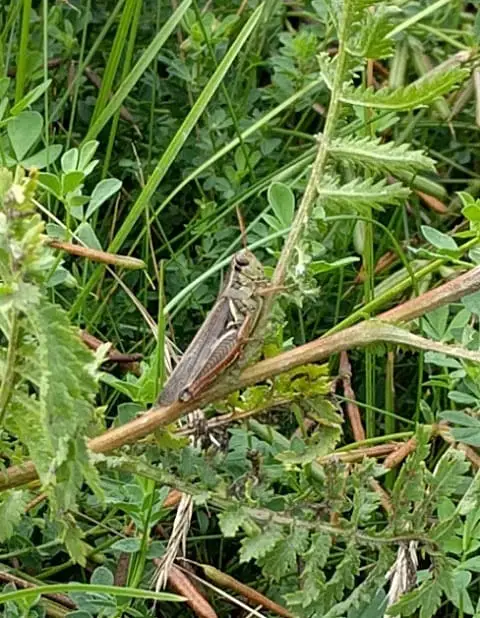
Grasshoppers, crickets and beetles are common in the summer and that makes them an excellent bait for trout.
I use a single size 12 or 14 sedge hook to secure these to the line.
You can drift them below the surface or on the surface.
You can also fish imitation crickets that can work well, and one of the best ones I have tried is the Berkley Gulp Crickets.
11. Plastic and Artificial Eggs
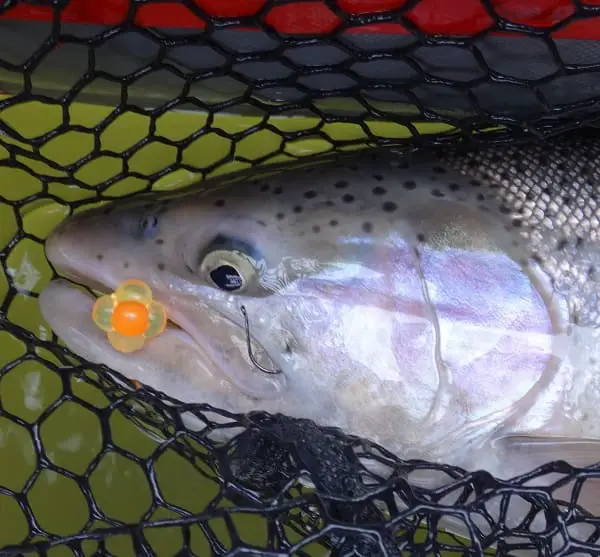
There are also imitations like plastic egg sack imitations, single rubber eggs, egg clusters, and Berkley PowerBait Dough.
I only use egg imitations in faster water when a trout has less time to inspect the bait and when the fast current almost sets the hook for you.
Otherwise, I do not recommend them.
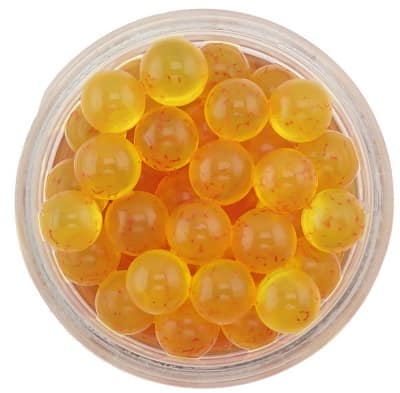
An exception and one of my favorite single egg imitation eggs, which can also be tied into spawn sacs or used as single eggs, is the Pautzke Fire Balls. These are basically soft beads, and they can be equally effective as hard beads.
I like the Brown Trout color, and the Chinook and Coho colors the most. They have lots of other great colors to choose from.
One of these eggs on a size 12 or 14 wide-gap trout hook can be deadly.
12. Berkely Red Wigglers And Angleworms
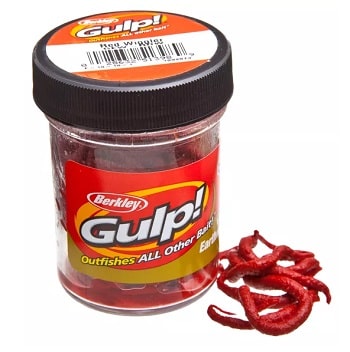
Berkley Gulp Earthworms, also known as red wigglers, are a good alternative for live worms when fishing in rivers. They are not as good as real worms.
They are also best used in currents and you should avoid using them in lakes and ponds.
13. Jigs For Trout Fishing
Most anglers do not think about jigs as bait for trout. However, jigs can be drifted through the current just like a bait can. Jigs can be used under a float or bobber the same way you would use a bait under a bobber.
The jigs I typically use as bait are smaller marabou-style jigs that pulsate and move with the current. These are lightweight and buggy-looking. You can also tip your jig with a maggot, worm, or grub which makes it even more bait-like.
The jigs I like the best are:
14. Prawns and Shrimp As Bait For Trout
Small shrimp tails can also be an effective bait for trout but are rarely used. I would consider these a low-percentage bait.
15. Is The Trout Magnet A Good Bait?
The honest answer is that although this plastic jig-type bait does catch trout, if I had to choose between a Trout Magnet and a worm or other high-percentage bait, I would choose the worm every time.
This bait is very popular; good marketing and a catchy name will do that. But I haven’t met a good trout guide yet that uses these. Check out the trout magnet worm.
Lures For Trout
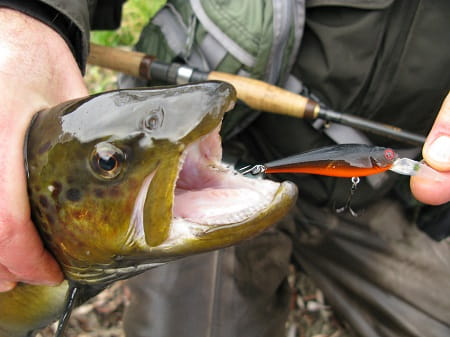
Some anglers consider lures as bait, I don’t!
To me, lures are lures, they are not actually a bait. I define bait as something you put on a hook.
Check out my page Best Lures For Trout for a huge list of the most effective lures, or see Lure Fishing For Trout for my best tips and advice on how to use lures to catch more trout.
Low Percentage Bait Options For Trout
Although these baits are recommended by anglers, and they can be used as bait for trout, I highly recommend you avoid them or only use them as a last resort, and only after you have tried multiple high percentage baits first.
- Powerbait Dough – Garlic scent or Corn Scent.
- Corn.
- Powerbait Mice Tails.
- Large Night Crawlers/ Dew Worms.
- Bread – Anglers squish or roll it into a ball and put it on a hook.
- Marshmallows and dried hard Marshmallows.
- Green Power Eggs.
- Powerbait Trout Nuggets – good for freshly stocked trout.
You have just read the shortened and revised article. I go into more detail on each of these good baits and discuss when, where, and how I fish these baits, the hooks I use, and many more tips, all in the full version of this article. Read it HERE.
Tight Lines
Graham
Resources:
What Do Trout Eat? (A Complete Guide to Trout Diet) (aquariumwhisperer.com)
https://hungryhorsenews.com/news/2012/dec/05/the-truth-about-trout-food-revealed-10/
https://a-z-animals.com/blog/what-do-trout-eat-everything-you-always-wanted-to-know-more/

My name is Edmund I live in Wyoming and I’m very new to this fishing process. It’s extremely windy here and I’m having trouble reading it and the water not really sure what to do we have two ponds that are stocked and no matter what I throw out they ain’t biting here. Your article is amazing can’t wait to try some tricks ty very much for listening
Hi Edmund,
Trout need to eat at some point and if you’re not catching any trout it’s probably not your bait that’s the problem. As I guide when the fish don’t want to bite I know sometimes it’s just that they are not feeding, but I also make sure I try everything possible to make sure I put the odds in my favor. I would recommend what I do and that is a process of elimination method.
First, Consider your line, try a lighter mainline or try a good fluorocarbon mainline to make sure they are not seeing the line. For a small pond, I might go as low as a 2 or 4-pound test line. And make sure you use a good quality line like the ones I recommend on my Best Lines page
If you don’t want to drop to such a thin line I would suggest using a micro swivel and adding a 24-inch leader. See my Best Leaders For Trout page for that.
I would also make sure that my hook is not so big that the fish can see it, this is if you are using bait. See my page on best trout hooks
I would also try jigs, flies, and lures for trout. You can see my favorite jigs HERE
Also, make sure you fish very early or very late which is often when the fish are biting and when the wind is calmest.
Lastly, don’t give up, there are always days when the fishing is great, it just might take a few trips before you get one of those days.
Good luck.
Hi Graham,
I wanted to say thank you for all of the information you have shared on this website. I found it be very helpful !
I do have a question, I’ve purchase the Pro-Cure Vacuum Packed Salmon Skeins eggs. I would like to use them for trout fishing, but I’m not exactly sure how. I’ve been watching YouTube videos and there are so many different techniques. I would like your opinion on what is the best? Also what size hooks and big of a piece of Skeins eggs?
I’d appreciate your time,
Faruk
Hey Faruk,
Good questions, there are 2 ways I fish skien for trout. One is with a bait loop knot, and the other is tied into an egg sac.
The size of the hook you use will depend on the size of the skein chunk you use. For a big chunk of skein you might use a hook size 2 to 6. For a small chuck that might contain 3 or 4 eggs you should probably use a size 10 or 12 hook.
The size of the skein you use depends on the conditions of the river. In fast water or water that is not very clear, you would use a larger piece of skien, which might mean the size of a ping-pong ball or size of quarter. If its a small stream or/ and it’s very clear water you will probably do better with a smaller piece of skien with 3 to 5 eggs.
Most often when trout fishing, I will use a piece of skien with 3 to 4 eggs and just enough of the membrane to hold the skein on the hook.
I might also tie the eggs into spawn netting if the skien I have is breaking apart easily. I discuss the best spawn netting colors, best types of spawn netting, sizes of the sacs to use, how to hook the sac on, and even determining the proper hook size on my page Spawn Bags: Tips and Tactics.
I should be doing a video on this soon, but until then, I hope that clears it up a bit.
Good luck,
Graham
Graham,
I love your articles. I find myself reading them over and over. I really appreciate what you’re sharing. I do have a question though; I don’t see any articles on how to actually bait your hook? Like, how do you put a cricket on a hook? through the leg? the stomach? the whole body and through the brain? How about baiting a hook with a meal worm or grub? or how to bait a hook with a single Salmon egg?
I did see the picture of how to put a plastic worm on a hook, but that was about it, which was totally opposite of everything my brain wants to do!
And with regard to the hook point, do we have the point sticking out of the bait or are we trying to hide it IN the bait? I see conflicting articles about this
Anyway, thank you buddy, you’re doing a great job, and I really appreciate your articles!
Hey Brett,
I’m really happy that you are enjoying the website so much. It’s a lot of work. I’ve been meaning to add more information and images regarding how to rig your baits. I’m also planning on doing a youtube channel.
Until I get more images or videos of how I hook baits, I’ll try to explain. Normally, with all live baits, I keep the hook point exposed even if it’s just a small amount. This increases your chances of the fish hooking itself and improves the hook set. If you think about an artificial fly. I and other guys catch a ton of trout, steelhead, and salmon on flies yet the hook point is always fully exposed and often very visible so I don’t think for the most part that the hook point being exposed is a problem. The exception might be in still water with very cautious fish.
When it comes to live bait and where to hook them, I try and hook them in a spot that does not kill the bait as quickly, but, also in a spot that makes the bait look more natural. So a grub or meal worm or garden worm, hooking it in the midbody is best because it keeps the bait more verticle, and keeps the bait alive longer than hooking it in the head.
With minnow as an example, I hook the minnow in the upper back near the dorsal fin, so as not to pierce organs. This keeps the minnow more upright and keeps it alive so it has movement.
Hope that helps,
Good Luck,
Graham